Colombia, officially the Republic of Colombia, is a country located primarily in South America, bordered by the Caribbean Sea, Venezuela, Brazil, Peru, Ecuador, Panama, and the Pacific Ocean. It's divided into 32 departments, with Bogotá as its capital and largest city. The population is around 52 million, and the area covers 1,141,748 square kilometers. Colombia's cultural heritage is a blend of European, Middle Eastern, African, and Indigenous influences. Spanish is the official language, but Creole, English and 64 other languages are recognized regionally.
1903: Secession of the Department of Panama
In 1903, the Department of Panama seceded from Colombia due to the United States of America's interest in influencing the area, particularly the Panama Canal.
1921: United States paid Colombia $25,000,000
In 1921, the United States paid Colombia $25,000,000 for President Roosevelt's role in Panama's creation.
June 1934: League of Nations awarded disputed area to Colombia
In June 1934, the League of Nations awarded the disputed area to Colombia, ending the war between Colombia and Peru.
1938: Urban Population
In 1938, the urban population of Colombia was 31% of the total.
1939: Publication of Poetry Books
Between 1939 and 1940 seven books of poetry were published under the name Stone and Sky in the city of Bogotá that significantly influenced the country; they were edited by the poet Jorge Rojas.
1940: Publication of Poetry Books
Between 1939 and 1940 seven books of poetry were published under the name Stone and Sky in the city of Bogotá that significantly influenced the country; they were edited by the poet Jorge Rojas.
1947: Colombia becomes world amateur champion
In 1947, Colombia won the world amateur champion title.
April 1948: Assassination of Jorge Eliécer Gaitán and El Bogotazo
On 9 April 1948, the assassination of Liberal presidential candidate Jorge Eliécer Gaitán ignited riots known as El Bogotazo, which spread throughout Colombia, leading to La Violencia.
1965: Colombia wins world amateur champion again
In 1965, Colombia was world amateur champion for the second time.
1970: Economic Growth
In 1970, Colombia experienced the beginning of a period of steady market economy growth, marked by an average increase in gross domestic product (GDP) of over 4% per year.
1973: Increase in Urban Population
By 1973, the urban population in Colombia had increased to nearly 60% of the total.
1974: Lowest Homicide Rate
In 1974, the homicide rate was at its lowest.
1982: Foundation of ONIC
In 1982, the Organización Nacional Indígena de Colombia (ONIC) was founded at the first National Indigenous Congress.
1989: Guerrilla demobilization after peace negotiations
In 1989, several guerrilla organizations began to demobilize following peace negotiations.
1989: International Law
In 1989, the Indigenous and Tribal Peoples Convention was established.
July 1991: Promulgation of a new Constitution
On 4 July 1991, a new Constitution was promulgated in Colombia, leading to changes viewed as positive by Colombian society.
1991: Ratification of International Law
In 1991, Colombia signed and ratified the Indigenous and Tribal Peoples Convention, 1989, the current international law concerning indigenous peoples.
1991: Constitutional Guarantee of Religious Freedom
In 1991, the Colombian constitution guaranteed freedom of religion, ensuring that all religious faiths and churches are equally free before the law.
1991: Constitution of 1991
In 1991, the government of Colombia was established within the framework of a presidential participatory democratic republic as defined by the Constitution of 1991.
1991: High Murder Rate
In 1991, the murder rate was 84.
1991: Civil law applied through an adversarial system
Since 1991, Colombia's system of civil law has been applied through an adversarial system.
1993: Healthcare Coverage Before Reforms
Before 1993, only 21% of the population was covered by the social and health security system in Colombia.
1994: Guerrilla demobilization after peace negotiations
In 1994, several guerrilla organizations decided to demobilize after peace negotiations.
1997: Édgar Rentería wins World Series
In 1997, Édgar Rentería became a champion of the World Series.
1998: End of Growth Period
By 1998, Colombia's market economy had grown steadily for nearly three decades, with gross domestic product (GDP) increasing at an average rate of over 4% per year since 1970.
1999: Recession
In 1999, Colombia suffered a recession, marking the first full year of negative economic growth since the Great Depression.
2000: Traces from the Archaic Period
Around 2000 BCE, traces from the Archaic Period were found at Puerto Hormiga and other sites, indicating early human occupation.
2001: Colombia wins Copa América
In 2001, Colombia won the Copa América, setting a record by remaining undefeated, conceding no goals, and winning every match.
2002: Álvaro Uribe's administration begins
In 2002, Álvaro Uribe's administration began, adopting the democratic security policy, including a counter-terrorism and counter-insurgency campaign.
2003: Film Act Passed
In 2003, the Colombian film industry began to grow with support from the Film Act.
2004: Constitutional amendment changed the one-term limit for presidents to a two-term limit
In 2004, a constitutional amendment changed the one-term limit for presidents to a two-term limit.
2005: Improvement in security, stability, rule of law, economic growth and development.
Since 2005, Colombia has experienced significant improvement in security, stability, and the rule of law, alongside unprecedented economic growth and development.
2005: End of Piloto Public Library photographic collection
The Piloto public library has Latin America's largest archive of negatives, containing 1.7 million antique photographs covering Colombia 1848 until 2005.
2006: Ethnic Groups Indicated by Census
According to the 2006 census, 86% of the population did not consider themselves part of one of the indicated ethnic groups and was divided into 49% Mestizo or of mixed European and Amerindian ancestry, and 37% White.
2006: Gold production level
From 2006 to 2017, Colombia produced 15 tons of gold per year until 2007.
2007: Economic Growth Reaches 7%
In 2007, Colombia experienced significant economic recovery, with growth reaching 7%, which was among the highest in Latin America.
2007: Foreign Tourist Visits
In 2007, Colombia had 0.6 million foreign tourist visits.
2007: Gold Production Increased Significantly
In 2007, Colombia's gold production increased significantly, surpassing the previous production levels.
February 2008: Millions of Colombians demonstrated against FARC
In February 2008, millions of Colombians demonstrated against FARC and other outlawed groups.
2009: Álvaro Uribe's approval rating peaked at 76%
According to a poll in 2009, former President Álvaro Uribe's approval rating peaked at 76%.
June 2010: Juan Manuel Santos won the presidential election
On 20 June 2010, Juan Manuel Santos won the presidential election with 69% of the vote.
2010: Álvaro Uribe's administration ends
In 2010, Álvaro Uribe's administration ended, after he was constitutionally barred from seeking re-election.
2010: Édgar Rentería wins World Series again
In 2010, Édgar Rentería won the World Series for a second time.
2011: "Borders for Prosperity" Plan Launched
In 2011, President Juan Manuel Santos launched the "Borders for Prosperity" plan to fight poverty and combat violence along Colombia's borders through social and economic development.
2012: Internally Displaced Persons (IDPs)
As of 2012, Colombia had the world's largest population of internally displaced persons (IDPs), estimated to be up to 4.9 million people.
2012: Healthcare Coverage After Reforms
By 2012, healthcare reforms in Colombia had widened population coverage by the social and health security system to 96%.
2012: Record Gold Production
In 2012, Colombia extracted a record of 66.1 tons of gold.
June 2014: Santos won re-election
On 15 June 2014, Santos won re-election with nearly 51% of the vote.
2014: Recognition in Global Green Economy Index
In 2014, Colombia's commitment to renewable energy was recognized in the Global Green Economy Index (GGEI), ranking among the top 10 nations worldwide in terms of greening efficiency sectors.
2014: Urban Population
In 2014, the urban population in Colombia stood at 76% of the total.
2015: Number of Cities with over 100,000 residents
In 2015, Colombia had seventy-two cities with populations of 100,000 or more.
2015: Repeal of the 2004 constitutional amendment
In 2015, Colombia's Congress approved the repeal of the 2004 constitutional amendment that had changed the presidential term limit.
2015: Public Spending on Education
In 2015, public spending on education in Colombia was 4.49% of gross domestic product and 15.05% of total government expenditure.
2015: Life Expectancy
In 2015, the life expectancy in Colombia was 74.8 years.
November 2016: Revised peace deal signed with FARC
In November 2016, the Colombian government and the FARC signed a revised peace deal, which was then approved by the Colombian congress.
2016: Colombian Health Care Institutions Ranking in Latin America
A 2016 study conducted by América Economía magazine ranked 21 Colombian health care institutions among the top 44 in Latin America.
2016: Homicide Rate
In 2016, Colombia registered a homicide rate of 24.4 per 100,000, which was the lowest since 1974.
2016: Military expenditure
In 2016, Colombia's military expenditure accounted for 3.4% of the country's GDP, placing it 24th in the world.
2016: Population Growth Rate
In 2016, Colombia's population growth rate was estimated to be 0.9%.
2016: Road Construction Target
In 2016, the Colombian government aimed to build 7,000 km of roads between 2016 and 2020.
2016: Infant Mortality Rate
In 2016, the infant mortality rate in Colombia was 13.1 per thousand.
2016: Tourism Contribution to GDP
In 2016, tourism contributed US$5,880.3 billion to Colombia's GDP, representing 2.0% of the total GDP, and generated 556,135 jobs, which was 2.5% of total employment.
2017: Duplicated Highways
At the end of 2017, Colombia had approximately 2,100 km of duplicated highways.
2017: Gold Production Extraction
In 2017, Colombia extracted 52.2 tons of gold.
2017: Poverty Statistics
In 2017, Colombia's National Administrative Department of Statistics (DANE) reported that 26.9% of the population lived below the poverty line, with 7.4% in extreme poverty.
2017: Economic Indicators in 2017
In 2017, Colombia's annual inflation closed at 4.09% YoY, and the average national unemployment rate was 9.4%.
2017: Increase in Foreign Tourist Visits
In 2017, foreign tourist visits to Colombia were predicted to have risen to 4 million, a significant increase from 2007.
2017: Cancer Research Center
In 2017, the government declared a cancer research and treatment center as a Project of National Strategic Interest.
June 2018: Iván Duque wins the presidential election
In June 2018, Iván Duque, the candidate of the right-wing Democratic Center party, won the presidential election.
August 2018: Iván Duque sworn in as President of Colombia
On 7 August 2018, Iván Duque was sworn in as the new President of Colombia.
2018: Forest Landscape Integrity Index Score
Colombia had a 2018 Forest Landscape Integrity Index mean score of 8.26/10, ranking it 25th globally.
2018: Colombia signed the UN treaty on the Prohibition of Nuclear Weapons
In 2018, Colombia signed the UN treaty on the Prohibition of Nuclear Weapons.
2018: Coal Exports Ranking
In 2018, Colombia was the 5th largest coal exporter in the world.
2018: Ethnic Composition
The 2018 census reported that the "non-ethnic population" in Colombia, consisting of whites and mestizos, constituted 87.6% of the national population.
February 2019: Venezuela cuts off diplomatic relations with Colombia
In February 2019, Venezuelan president Nicolás Maduro cut off diplomatic relations with Colombia after Colombia helped Venezuelan opposition politicians deliver humanitarian aid.
August 2019: Citizenship Offered to Venezuelan Children
In August 2019, Colombia offered citizenship to more than 24,000 children of Venezuelan refugees who were born in Colombia.
2019: Petroleum Production Ranking
In 2019, Colombia was the 20th largest petroleum producer in the world, producing 791 thousand barrels per day.
January 2020: Colombia rejects Maduro's proposal to restore diplomatic relations
In January 2020, Colombia rejected Nicolás Maduro's proposal to restore diplomatic relations between the two countries.
November 2020: Pictographs revealed at Serranía de la Lindosa
In November 2020, a site with pictographs at Serranía de la Lindosa was revealed and suggested to be approximately 12,500 years old.
2020: Road Construction Target Deadline
By 2020, the Colombian government planned to complete 7,000 km of roads, aiming to reduce travel times and transport costs.
2020: Population Size
In 2020, Colombia had an estimated population of 50 million people, making it the third-most populous country in Latin America.
2020: Dominance of Coal and Petroleum Exports
In 2020, over 40% of Colombia's exports were based on coal and petroleum.
2020: Homicide Rate Decrease
In 2020, the murder rate further decreased to 22.6, though still among the highest in the world, it decreased 73% from 84 in 1991.
April 2021: Start of protests due to proposed tax bill
On 28 April 2021, protests began in Colombia in response to the government's proposed tax bill.
2021: Road Network Size
In 2021, Colombia had 204,389 km of roads, of which 32,280 km were paved.
June 2022: Gustavo Petro wins the presidential election
On 19 June 2022, Gustavo Petro won the presidential election with 50.47% of the vote.
August 2022: Petro sworn in as the country's first leftist president
On 7 August 2022, Gustavo Petro was sworn in, becoming the country's first leftist president.
2022: Colombian Hospitals Ranking in Latin America
In 2022, 26 Colombian hospitals were among the 61 best in Latin America.
2022: Colombia elected Gustavo Petro as its first leftist leader
In 2022, Colombia elected Gustavo Petro as its first leftist leader, and Francia Marquez as the first black person elected as vice president.
2023: Estimated Ethnic Composition
A 2023 study by Latinobarómetro estimated the ethnic composition of Colombia as 50.3% Mestizo, 26.4% White, 9.5% Indigenous, 9.0% Black, 4.4% Mulatto, and 0.4% Asian.
2023: Colombian Hospitals Ranking in the World
Also in 2023, two Colombian hospitals were among the top 75 of the world.
2023: GDP (PPP) reaches US$1 trillion
In 2023, Colombia's GDP (PPP) was estimated by the International Monetary Fund to be US$1 trillion, ranking 32nd in the world and third in South America.
2024: Global Innovation Index Ranking
In 2024, Colombia was ranked 61st in the Global Innovation Index.
2050: Projected Population
By 2050, Colombia's population is projected to reach 55.3 million.
Mentioned in this timeline
Venezuela officially the Bolivarian Republic of Venezuela is a country...
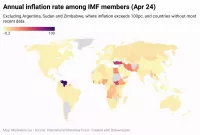
Inflation in economics signifies an increase in the average price...
France officially the French Republic is a country primarily in...
Argentina officially the Argentine Republic is located in the southern...

War is defined as an armed conflict involving the organized...
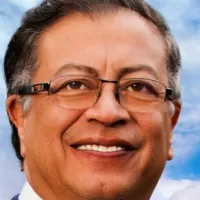
Gustavo Francisco Petro Urrego is a Colombian politician and former...
Trending
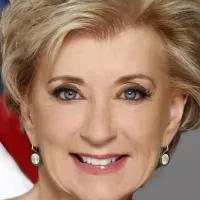
5 months ago Linda McMahon fights trans inclusion in women's sports; Title IX violations targeted.
CNBC is an American business news channel owned by NBCUniversal a unit of Comcast It provides live business news and...
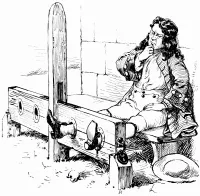
Stocks were a form of physical punishment and public shaming devices used to restrain a person's feet Evidence indicates use...

4 months ago Joe Mixon Placed on NFI List: Injury Concerns Arise During Texans Training Camp

2 days ago Cambridge Dictionary names 'parasocial' word of the year, inspired by Swifties and AI.
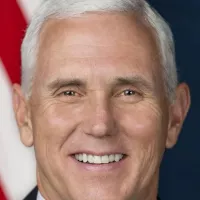
8 months ago Mike Pence to receive JFK Profile in Courage Award for election action.
Popular

XXXTentacion born Jahseh Dwayne Ricardo Onfroy was a controversial yet...

Cristiano Ronaldo often nicknamed CR is a Portuguese professional footballer...
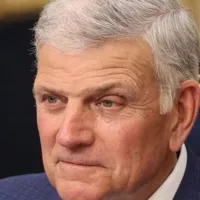
William Franklin Graham III commonly known as Franklin Graham is...

Candace Owens is an American conservative political commentator and author...
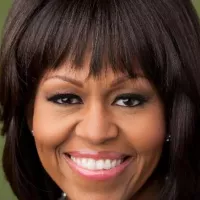
Michelle Obama is an American attorney author and former First...

Bill Clinton the nd U S President - served as...